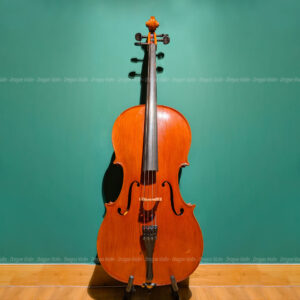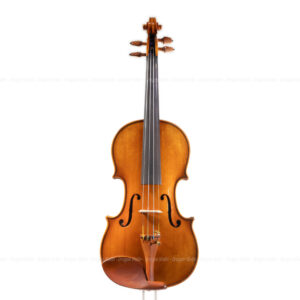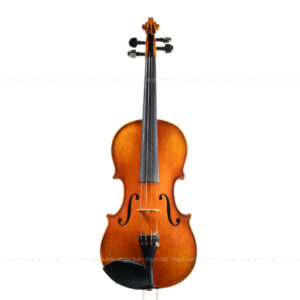Paul Kaul was born in Mirecourt in 1875, and began his apprenticeship at the Jerome THIBOUVILLE LAMY workshop at the age of 13, where his father was hired to polish musical instruments.
In 1899, at the age of 24, after serving in the French army, he joined the THIBOUVILLE LAMY factory in Paris. In 1900, he left THIBOUVILLE to join SILVESTRE & MAUCOTEL (Paris), where he worked from 1900 – 1905, before moving to the VUILLENIM-DIDION workshop in Nantes.
KAUL founded his own workshop in Nantes in 1907, on Rue Racine (Paris), the first violins bearing his name can be found in the same year.
In 1908, he moved his factory to 21 Rue Du Pont Communeau.
In 1917 in Nantes, he met violinist Lucien CAPET, who had a profound influence on KAUL’s career.
In 1926, KAUL moved its factory to Paris, at 130 Boulevard Brune before finally moving to Rue de Rome.
Paul KAUL devoted his life to making violins, continuously improving their designs and researching throughout his career. His products are often classified into 4 stages:
- 1907-1919: Inspired by great Italian masters such as Amati, Guarneri, Stradivari, often called the opening period of KAUL.
- 1919-1928: This second period is very special, considering the quality of KAUL’s products to date. It was during this period that he created many models, most notably the CAPET model.
- – 1928-1930: During this period, KAUL returned to more classic models, especially those of Stradivari.
- 1931-1951: This fourth period marked the introduction of the Enesco model, which featured a wider model with lower arching and lower rib height.
KAUL won first prize for prestige in 1930, at the Brussels international competition.
KAUL’s violins were played by renowned violinists of his time such as Lucien CAPET, Georges ENESCO and Yehudi MENUHIN.
In the early stages, his products were stamped “PAUL







